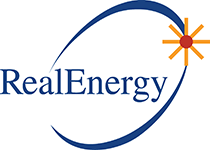Regional Biosolids Drying with Power Oxidation
Napa, California - Lee Lundberg, PE will be presenting a white paper coauthored by him and Kevin Best, RealEnergy at the Air and Waste Management Association (AWMA) 110th annual event "Bridging Environment, Energy and Health" event on Wednesday June 7, 2017 in Pittsburg, Pennsylvania. Wastewater Treatment Plants (WWTPs) generate residue that can be dewatered to a total solids content of 20-25% solids. The residue is referred to as Class A or Class B biosolids, depending on the level of stabilization provided at the WWTP. Class B material is often driven 50-100 miles to a landfill disposal site or to agricultural sites for spreading (weather permitting). As regulations are limiting landfill and spreading, some material goes to composting facilities for further processing to a Class A pathogen free product that can be used freely as a soil amendment or low grade organic fertilizer. On-site or regional biosolids processing to Class A are proposed here. Past practices to further stabilize biosolids (or raw sludge) have included incineration, which results in a permanent destruction of the nutrient rich material in exchange for a little electricity today. This practice yields an ash product, which has some limited beneficial uses. Sometimes, ash contains elevated heavy metal levels which limit its use and require it to be landfilled. But after several generations of synthetic fertilizer use (from natural gas), soil tilth is often depleted and in need of the recycling of macro and micronutrients in biosolids. Andritz, RealEnergy and Dresser Rand, a Siemens Company – Recycling as a Service Public policy in the USA is driving several environmentally sustainable solutions for biosolids including landfill diversion and processing to Class A for beneficial reuse. Like several other sustainable public policies (solar pv and natural [...]
